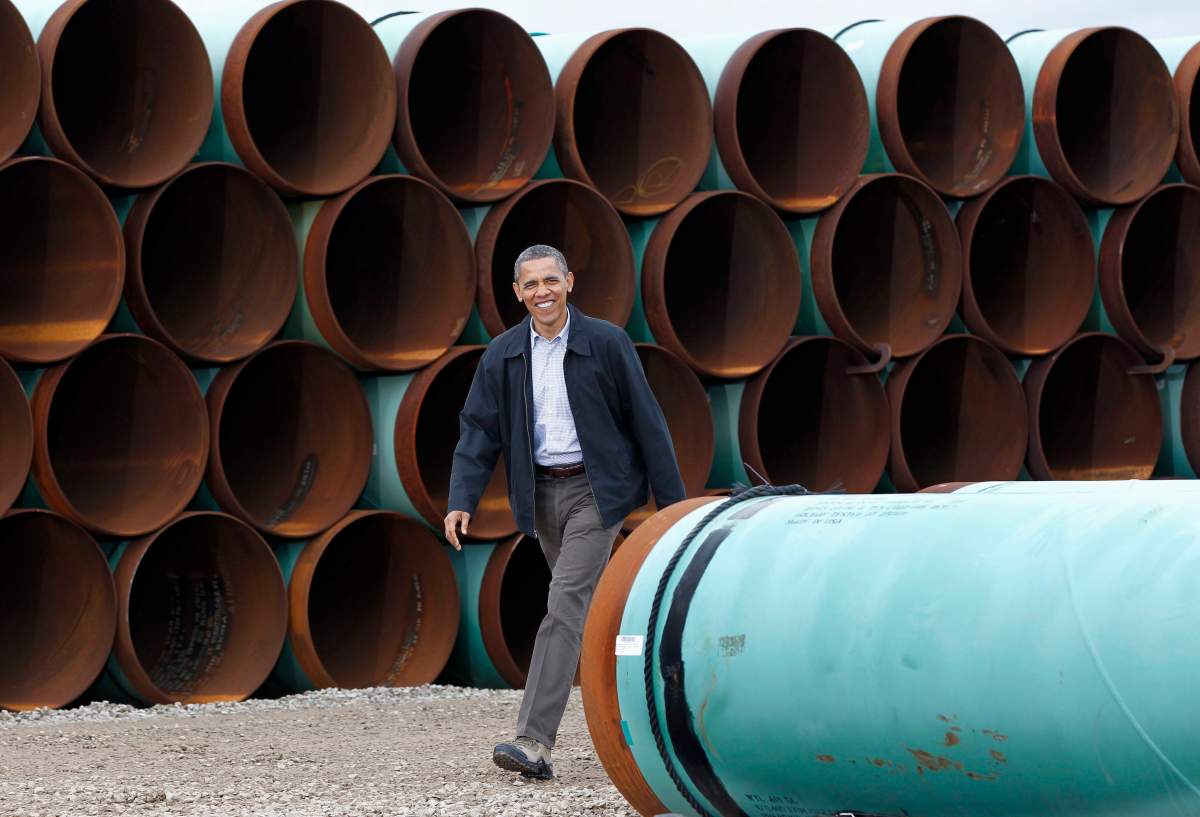While the fate of TransCanada’s embattled Keystone XL remains uncertain 70-odd months into its quest to link Alberta’s oilsands with the Gulf of Mexico, another Canadian company’s lesser-known, less-scrutinized pipeline project is on track to make it there first.

And the Alberta government is weighing whether it wants in.
The province’s Petroleum Marketing Commission made its first foray into the bitumen-shipping business earlier this year, when it committed to shipping 100,000 barrels a day for 20 years in TransCanada’s Energy East pipeline. That works out to a $5-billion commitment over two decades.
Alberta wants to do more of that, with the twin goals of boosting an industry to which it’s tied its fate and getting better bang for the bitumen the province gets paid in lieu of royalties.
One of the first projects it’s considering is Eastern Gulf, a partnership between Calgary-based Enbridge and U.S. company Energy Transfer.
The project would create an oil pipeline from Potoka, Illinois – already a destination for oilsands product – to the Gulf.
MAP: Approximate route of the proposed Eastern Gulf pipeline
Source – Enbridge and Energy Transfer websites
“The general motivation for the province is to make sure we have good access to markets,” Richard Masson, CEO of Alberta’s Petroleum Marketing Commission, said in an interview.

Get weekly money news
“The Gulf coast has got the biggest refining capacity in North America. So that’s good. We also look for ports that allow you to export to international markets.”
The 1,200-kilometre pipeline would ship up to 660,000 barrels a day, close to Keystone’s potential 800,000.
But it faces far fewer hurdles.
It crosses no international borders, so doesn’t need the State Department signoff now keeping Keystone in limbo.
It helps that much of the pipe is already underground – it’d just be converted to carry oil.
Pending approval from the Federal Energy Regulatory Commission and the Illinois Commerce Commission, construction could start as early as next year.
- Calgary police seek to identify potential arson suspect
- Hockey, table tennis to go ahead in Alberta after figure skating opts out over trans law
- 1 person killed as police respond to hundreds of crashes on Calgary roads
- Redwood Meadows, Alta. fire department devastated by blaze that destroyed 3 trucks
That’s not to say there’s no opposition.
“It’s easy to propose a pipeline, but once people start to really grapple with the environmental issues associated with these pipelines, they tend to slow down and get mired in opposition,” said Anthony Swift, a DC-based lawyer with the National Resources Defence Council.
He argues the precedent of President Barack Obama’s June speech stipulating Keystone could only go forward if it didn’t increase greenhouse gas emissions will impact other pipeline decisions.
“These pipeline projects are causing people across both sides of the border to have a real conversation about what direction we want to go in for our energy future, and whether unrestricted expansion of tarsands production is part of the future in which we also address the very real threat of climate change.”
“Open season,” the period during which producers express interest in shipping hydrocarbons through hypothetical pipelines, was supposed to end last week but has been extended through September 30.
Alberta hasn’t yet decided whether it wants in.
“Each decision is kind of unique,” Masson said. “There’s pluses and minuses. … They’re going from Point A to Point B in the U.S. and so they don’t require a presidential permit. And so that’s been the holdup on Keystone XL.”
But if not this project, the province plans to back others.
“We look at all of the things that are going on in North America … to find the right infrastructure to get us new markets developed,” Masson said.
The province has no target as to how much oil it plans to commit, or to how many projects.
“I wouldn’t say there’s a goal: The market’s very dynamic,” he said. “We’re trying to keep track of all the different pieces and how they line up. And there’ll be places where it makes sense for us to participate.”
So what does it mean for the provincial government to take on the role of oil producer?
Backing Energy East made strategic sense on a number of levels, noted Canadian Energy Research Institute senior researcher Dinara Millington.
“It was, in part, a strategic move on the part of the government to show the support of the province behind this project and to encourage this idea of Canadian energy for Canadians.”
Other projects could be different stories altogether.
“I think they would evaluate that on a project-by-project basis.”
Related: Crude Awakening – A Global News investigation into Alberta’s oil spills
With map from Leslie Young




Comments